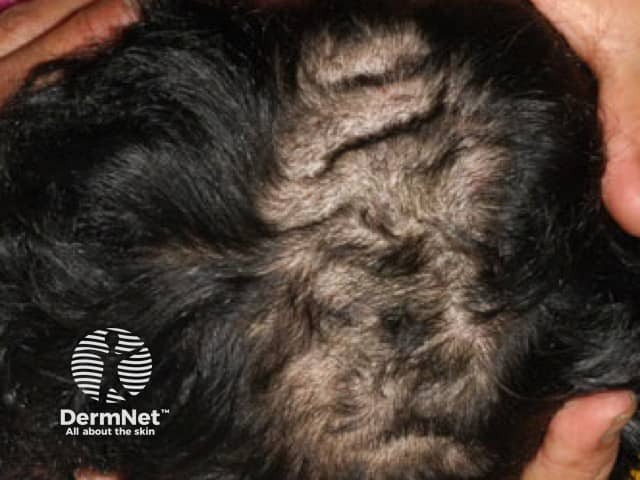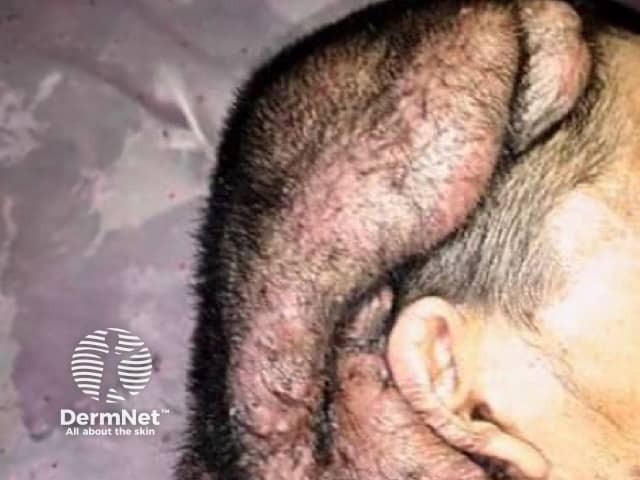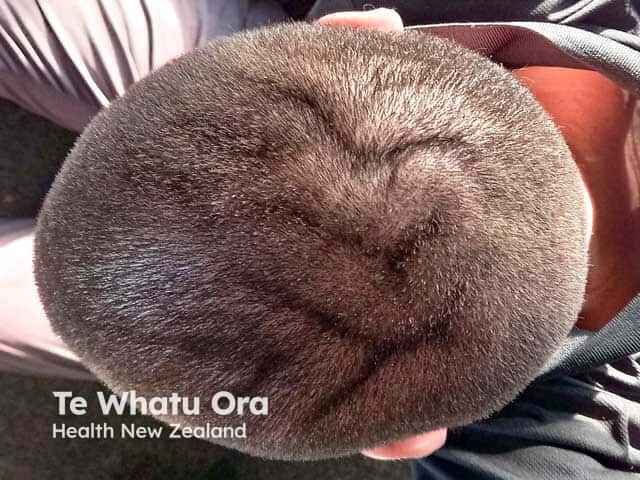Main menu
Common skin conditions

NEWS
Join DermNet PRO
Read more
Quick links
Author: Dr Fiona Larsen, Procedural Dermatology Fellow, UTSW Medical Center, Dallas, TX, USA, 2007. DermNet Revision September 2021
Introduction Demographics Causes Clinical features Diagnosis Treatment Outcome
Cutis verticis gyrata is an overgrowth of the scalp skin resulting in convoluted folds and deep furrows of skin that resemble the surface of the brain.



Cutis verticis gyrata occurs more commonly in males than in females. The primary form of cutis verticis gyrata has a reported male-to-female ratio of 5:1. The incidence of cutis verticis gyrata may be reported as lower in women because longer hair may camouflage the condition.
Most primary cases develop after puberty and typically occur before age 30 years. Some secondary forms of cutis verticis gyrata, such as cerebriform intradermal naevus, can be present at birth.
Cutis verticis gyrata is the result of overgrowth of the scalp skin. It can be classified as:
Cutis verticis gyrata typically affects the central and back of the scalp, but some forms can involve the entire scalp. The folds are soft and spongy. The folds are unable to be corrected with pressure. The skin colour is not affected. The number of folds can vary from 2 to more than 10.


Courtesy Dr Mohammad Mahmoud

Cutis verticis gyrata
Cutis verticis gyrata is usually a clinical diagnosis.
Investigations may be undertaken for associated neurological conditions or underlying disorders including:
The treatment of cutis verticis gyrata includes good scalp hygiene to avoid accumulations of secretions in the furrows of the scalp.
Definitive treatment by surgery may be requested for cosmetic reasons. Small localised lesions can be excised in one procedure. Larger lesions can be removed with serial excision, requiring multiple procedures.
Cutis verticis gyrata is a progressive condition. It is mainly troublesome due to cosmetic appearance. Rarely, it can be complicated by melanoma developing within a melanocytic naevus.